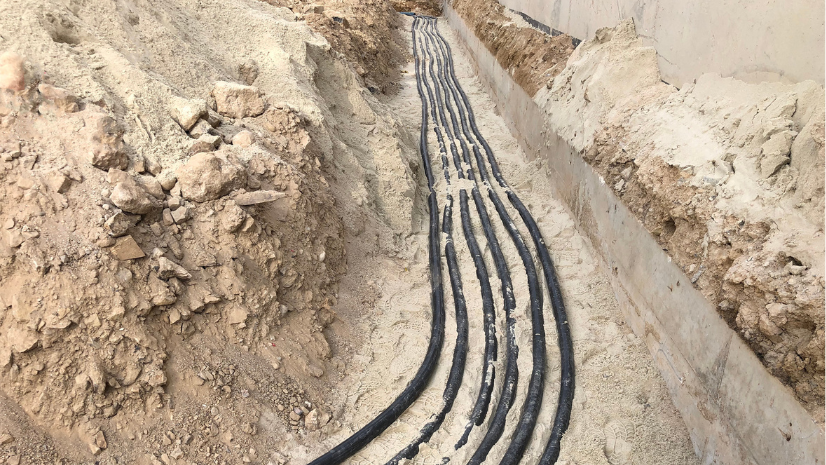Introduction: The End of an Era for Epi Info™
For nearly 40 years, Epi Info™ has been a trusted, go-to tool for public health professionals worldwide. Adopted and maintained by the CDC, it provided an accessible and flexible way to collect, manage, and analyze epidemiologic data—enabling outbreak investigations, surveys, and statistical testing with ease. It empowered disease detectives in the field and supported agencies with limited technical resources.
As CDC sunsets support for Epi Info in September 2025, users face both a challenge and an opportunity: How can we retain the strengths of Epi Info while building a modernized, spatially-enabled infrastructure that supports today’s data needs and tomorrow’s public health demands? This blog explores that question and outlines how ArcGIS technology can support and enhance your epidemiologic workflows.
The Role of ArcGIS in Public Health Analytics
Much of the core functionality of CDC’s Epi Info revolves around the ability to design and deploy a questionnaire quickly, enter interview information, and then analyze the resulting collected data for epidemiologic insights. When data are originally collected in an electronic format, several advantages are realized over re-entering data from paper questionnaires – time savings, greater accuracy, reduced effort and pre-formatting for analysis. In the case of an outbreak, these advantages are essential to understanding the outbreak type, identifying relevant exposure(s), and taking action quickly to stem transmission. Interpreting and disseminating results to leaders, policymakers, and the public in an easily interpreted manner are also crucial.
Esri’s ArcGIS technology is listed as an alternative for users of Epi Info who are looking to continue their public health investigations and studies.
Survey123, for example, is a comprehensive, form-centric application in ArcGIS that can be used to create questionnaire forms for routine case and outbreak investigations. The web designer allows for fast, intuitive form creation. Nowadays, you can also deploy our AI Assistant to draft a questionnaire for you and provide multi-lingual translation. There is also Survey123 Connect, our XLSX-based form creation software that not only allows for more complex functions like auto-calculations, skip logic, and formatting, but also facilitates the import of existing questionnaire file templates. These tools ensure that you can hit the ground running to create or easily modify an existing form. You can also share and import templates others have designed, and if it’s a multi-jurisdictional investigation, consider utilizing partnered or distributed collaborations to more easily work together.
Survey123 is inherently spatial in nature, with a variety of built-in location question types. By capturing detailed location data at the time of an interview, your data will immediately be ready for spatial analysis. For organizations where diseases are reported via Electronic Lab Reports (ELR) or stored in an external case reporting system database, our database connectors and the ArcGIS API for Python can help prepopulate a Survey123 layer with the stored health record information. If you are collecting data that can be defined as protected health information (PHI), you should learn about Esri’s privacy and security measures, such as how ArcGIS Online meets FedRAMP moderate standards and ArcGIS Enterprise deployments align with your own internal firewalls and safeguards. It’s always important to ensure that any platform housing health data can be trusted.

When a survey is deployed and includes location data, a web map is created by default, allowing for immediate visualization of results as surveys are submitted. Additional contextual layers like population data or exposure locations can be added to the map seamlessly from resources like your authoritative data, ArcGIS Online, or the Living Atlas of the World. A web map’s look and feel can also be customized to match your organization’s brand.
By bringing Survey123 result data and web maps into ArcGIS Dashboards, you can monitor the spread of an outbreak or track the progress of the investigation. Use indicators and filters to visualize the total case counts by status, plot the epi curve of the investigation, or even graph the case load by the assigned interviewer to see who may need extra support. Survey123 web-based forms can be embedded within ArcGIS Dashboards as well to have a single go-to interface. Some great examples of these methods can be seen with the GIS-based contact tracing effort in Colorado in 2020 and the vaccination program for homebound individuals in Clackamas County, Oregon.
All these items – surveys, web maps, dashboards, and web applications – can be shared at a level of access that you choose. This could be a subset of epidemiologists working on the investigation or the entire health department. Collaborate on the same data. No more internal emailing of line lists or merging data with the Epi Info Data Packager!
As cases are interviewed and information becomes available, a multitude of analytic tools in ArcGIS, many using GeoAI methods, can be applied such as the clustering and hotspot analysis tools or link analysis. Within web maps there are also built-in tools to run quick analyses. Much like Epi Info, the Spatial Statistics Toolbox’s Modeling Spatial Relationships toolset allows you to calculate different types of geographically weighted regressions for deep dives into associations between exposures and outcomes. Logistic, Poisson, and OLS regression models are also available.
Addressing Gaps: Collaborative, Custom Solutions
After nearly four decades of refinement and improvement, and with over 1 million users in 181 countries, Epi Info’s deprecation will be hard felt. Esri’s software shares many overlapping capabilities with Epi Info and has an enhanced focus on the spatial analytical aspects of investigations. However, we acknowledge that there are gaps that ArcGIS technology currently does not fill.
The StatCalc component of Epi Info allows for ease of calculating classic epidemiologic statistical associations. Odds ratios, relative risks, sample size, and chi-square tests are all baked into StatCalc. These functions do not currently exist in the collection of ArcGIS Pro’s tools. There are summary statistics tools as well as crude and adjusted-rate tools available within ArcGIS Pro. For the remainder of the missing tools, we need to be a little creative.
Esri’s ArcGIS platform is solidly based in Python, one of the most approachable programming languages. At the time of this writing, the entirety of the Epi Info source code is available for free in Python on GitHub. Using the Epi Info GitHub library, it’s possible to create custom odds ratio and relative risk tools within ArcGIS Pro to be used on desktop. Alternatively, they can also be published as ArcGIS Enterprise geoprocessing services or ArcGIS Online web tools to be used as widgets within an ArcGIS Experience web application. ArcGIS also integrates with R and SAS so if you have existing scripted workflows in these applications, you can still run them and bring your resulting data into ArcGIS.
And if you need assistance in crafting a custom solution, Esri’s Professional Services division can help.

The Future of Public Health Data Analysis
Epi Info’s retirement marks a decisive moment for public health. Many organizations will need to rethink their current workflows and identify new tools that support epidemiologic investigation, analysis, and communication. But this transition also offers the chance to strengthen systems—to integrate spatial thinking, enhance collaboration, and automate processes that once required manual effort.
We encourage agencies to proactively evaluate how their work has relied on Epi Info. Consider not just what needs to be replicated, but what could be improved or modernized. How might better mapping, real-time dashboards, and customizable analytical workflows help your team make faster, better-informed decisions? What questions have you had during an outbreak investigation that may now be more approachable with the use of GIS and GeoAI technologies?
You don’t have to make the shift alone. Esri offers tools, self-service training, solutions, community resources, and professional services to help you design a solution that works for your unique needs—building on the legacy of Epi Info while embracing what’s next. And the good news is that most of your organizations already have ArcGIS. For those that don’t you can check out a free trial or see if your country qualifies for granted or discounted systems.
Call to Action: Let’s Shape the Future Together
Epi Info sunsets in September 2025. CDC has done a great service to the public health community by providing this free software for the past forty years, and by giving us ample time to prepare for this shift. We propose to use this period between the deprecation notice and sunsetting of Epi Info as a call to action; A period to ramp up communication and collaboration. The foundational tenets of public health have the community’s health and interest at heart. We identify evidenced-based approaches to improve the health of our neighbors and constituents. That same camaraderie that supported health officials through the COVID-19 pandemic and countless team-based efforts can be harnessed to create the next generation of public health tools to meet current and future needs. Collaborate. Share your workflows. Ask questions of one another and empower yourselves with modern ArcGIS technology.
Let us know if we can help.


